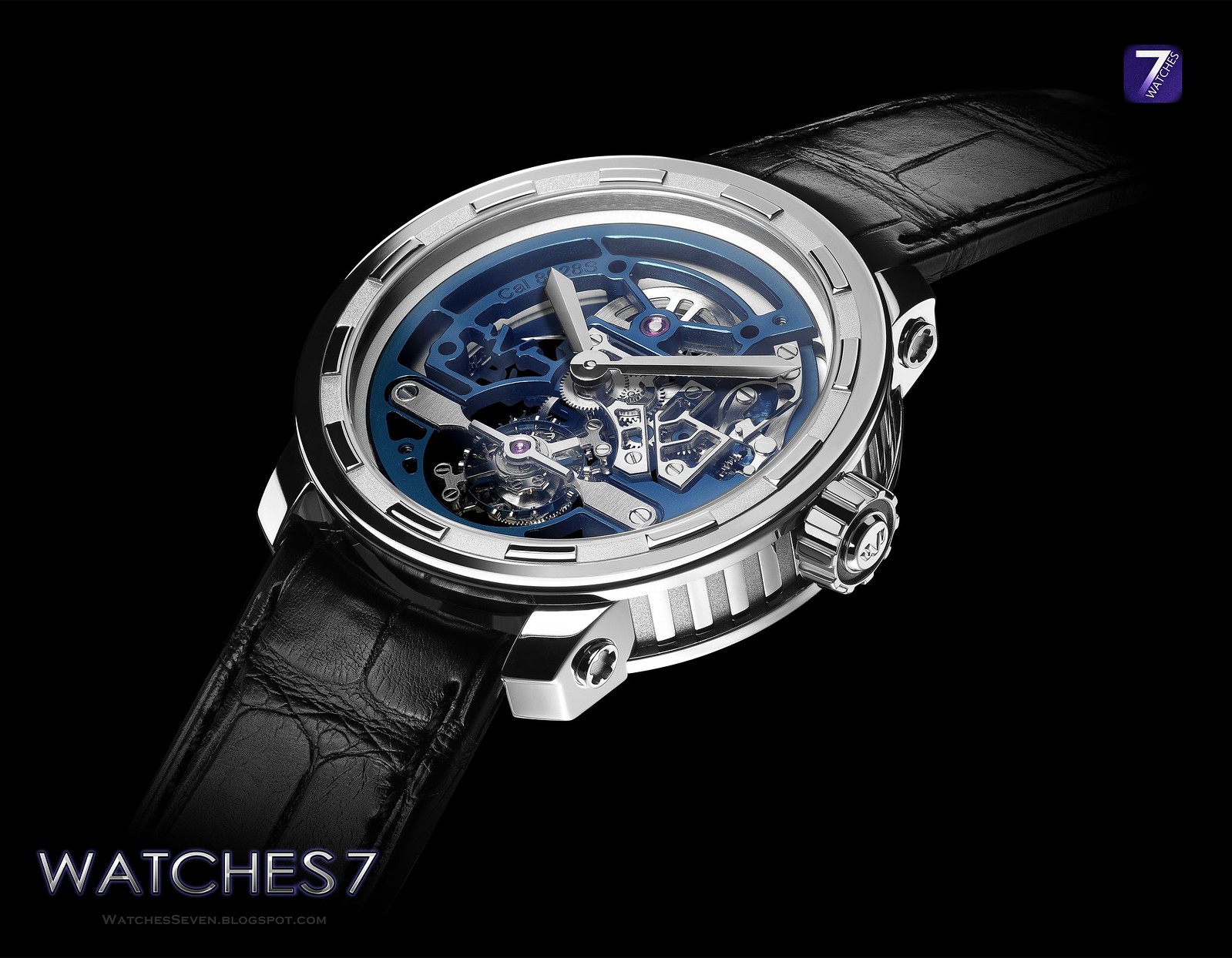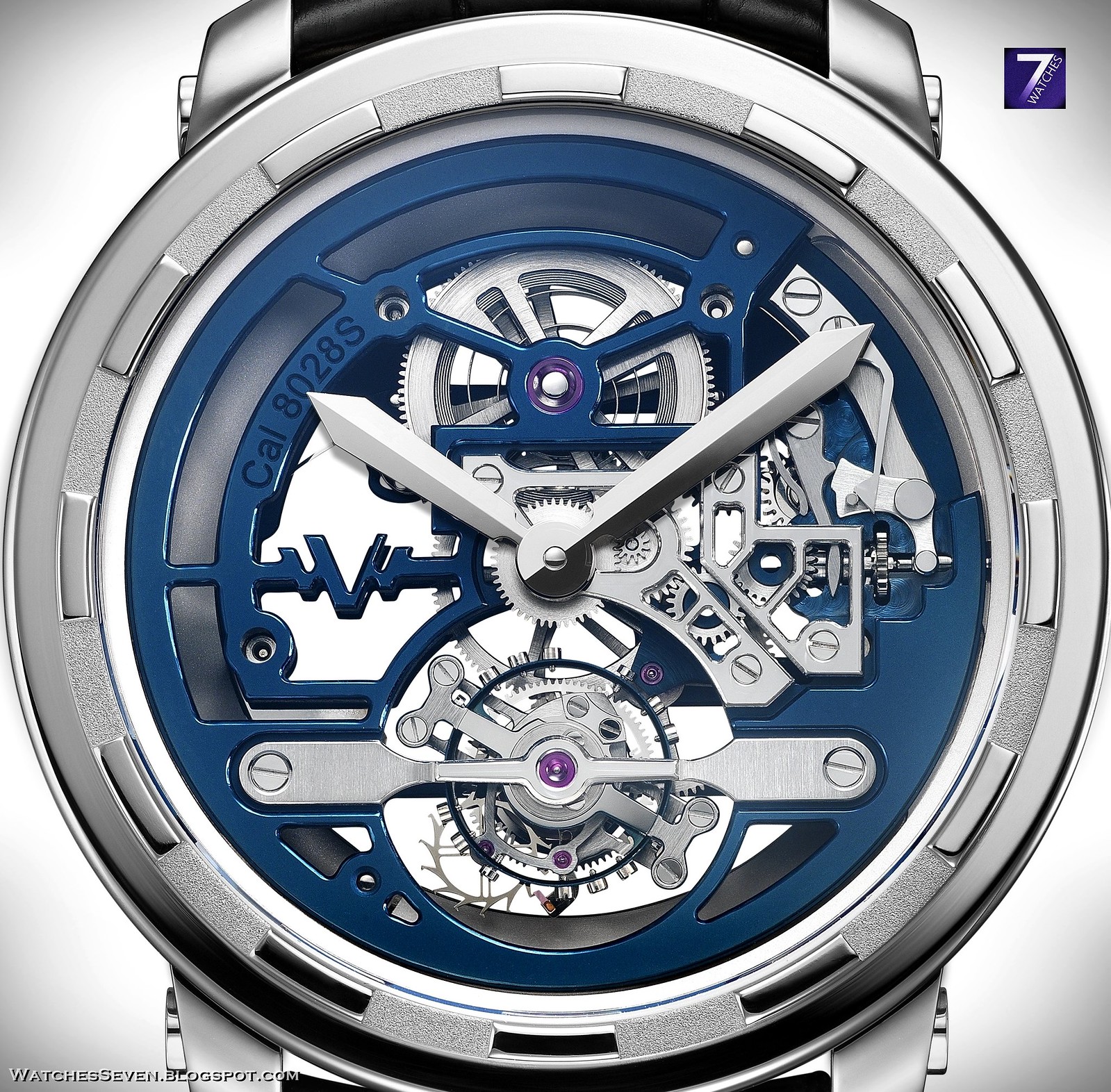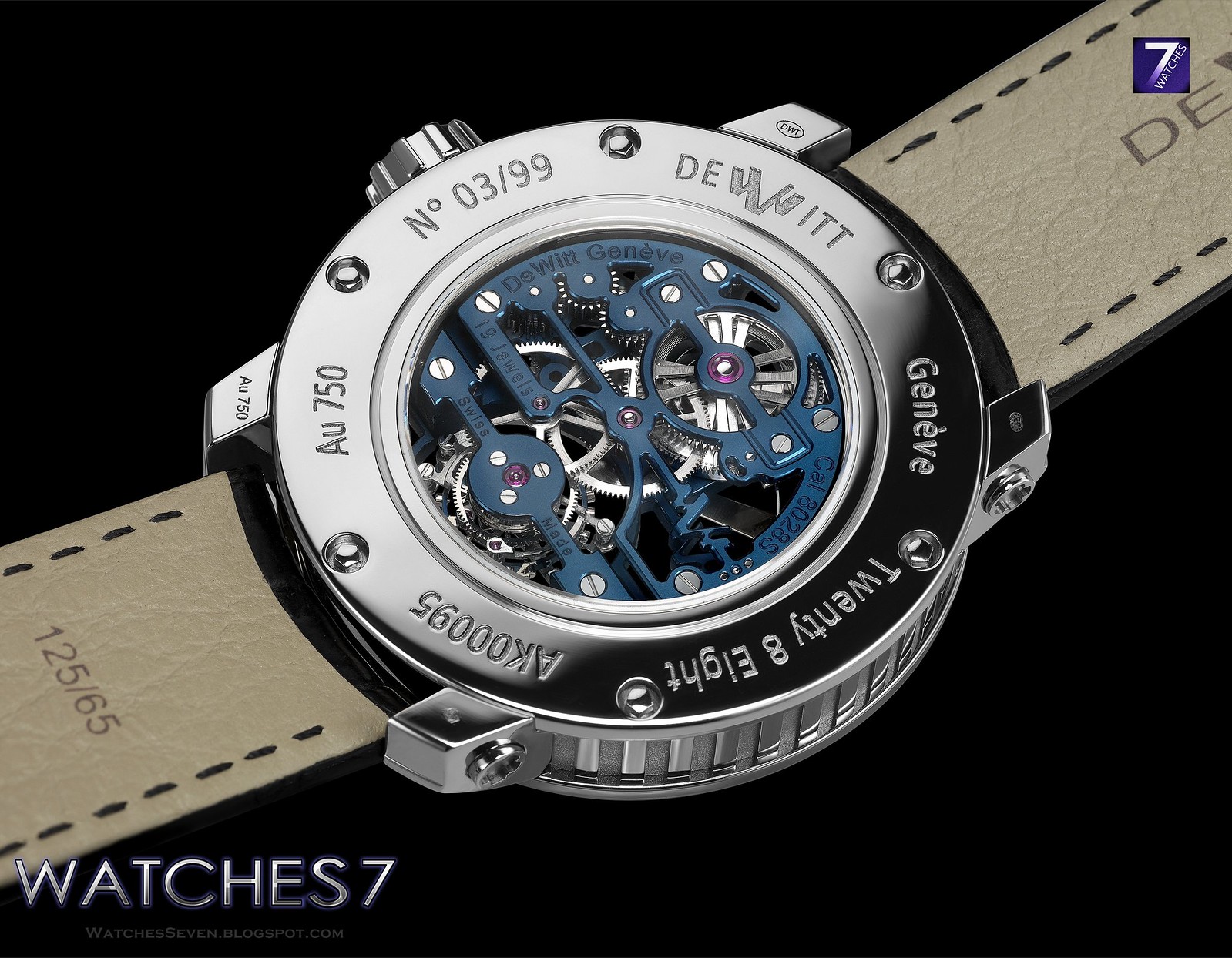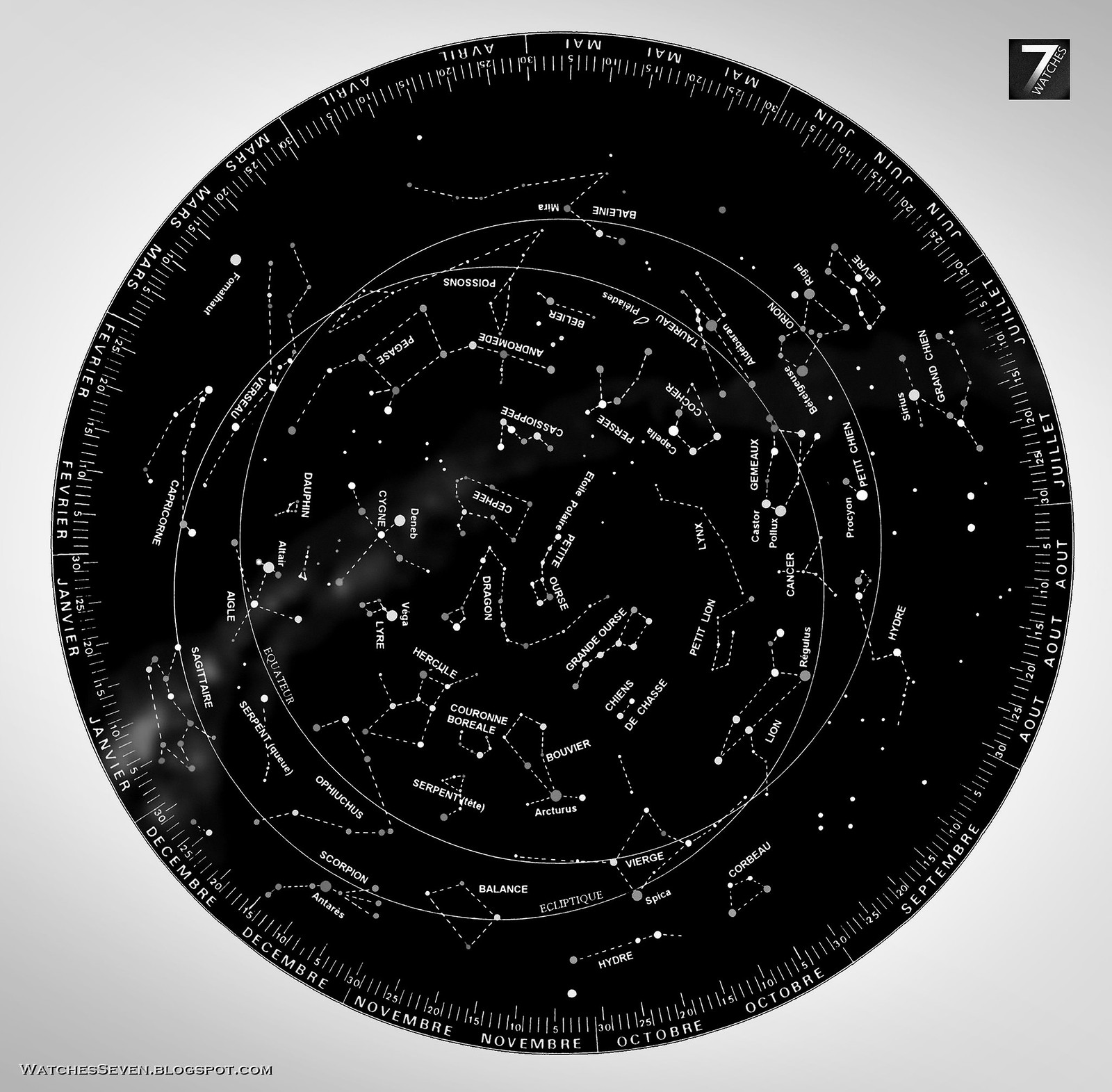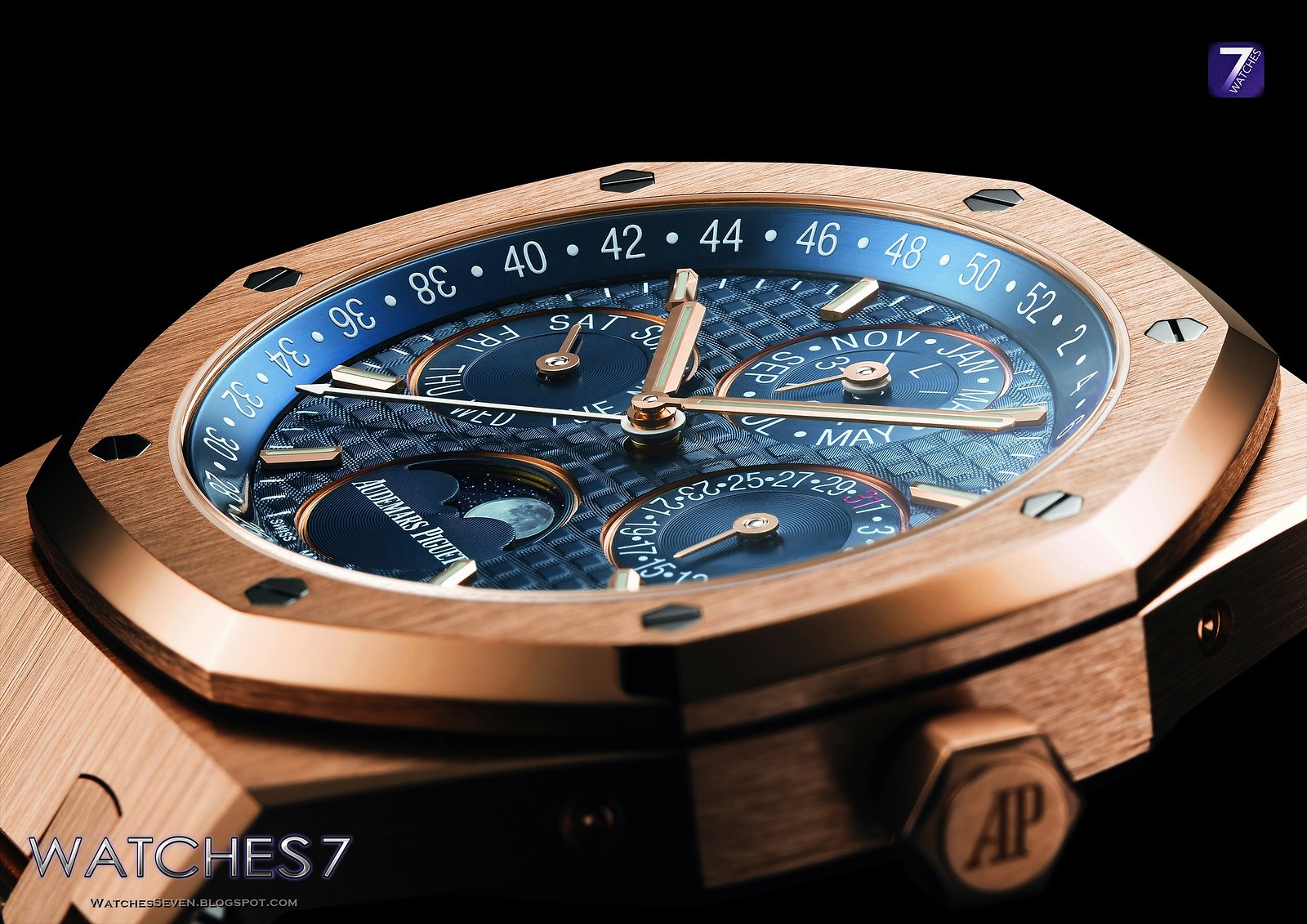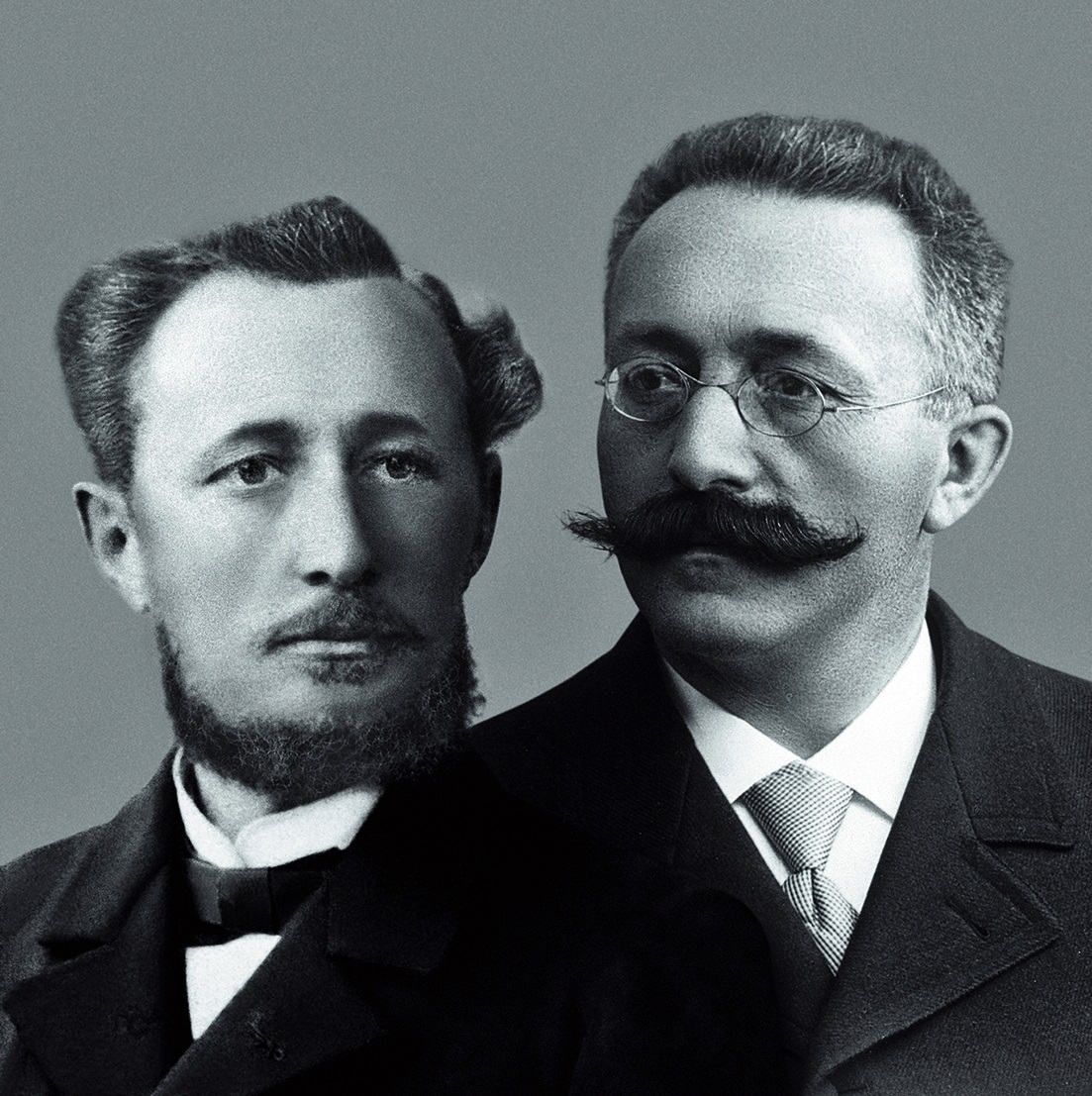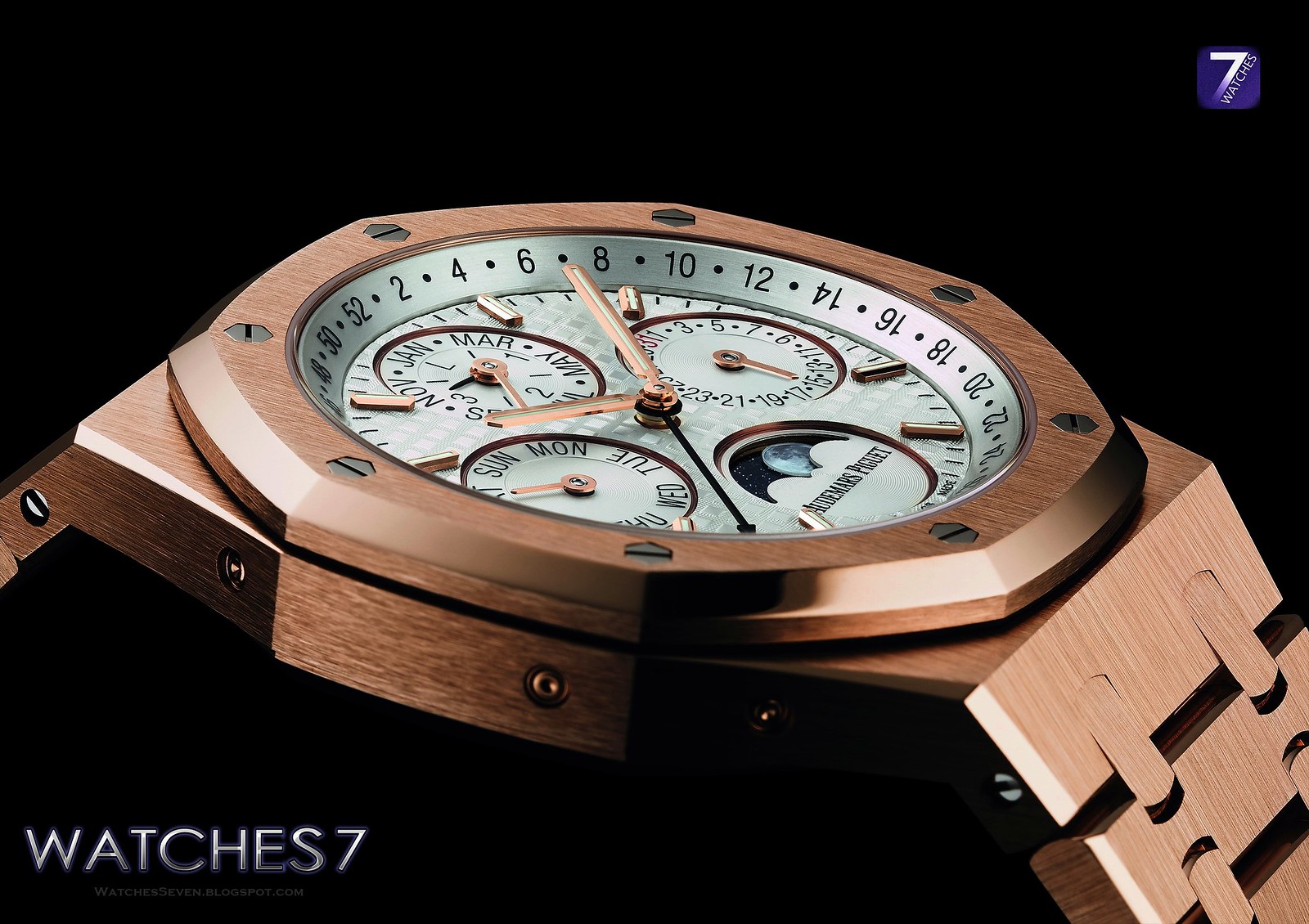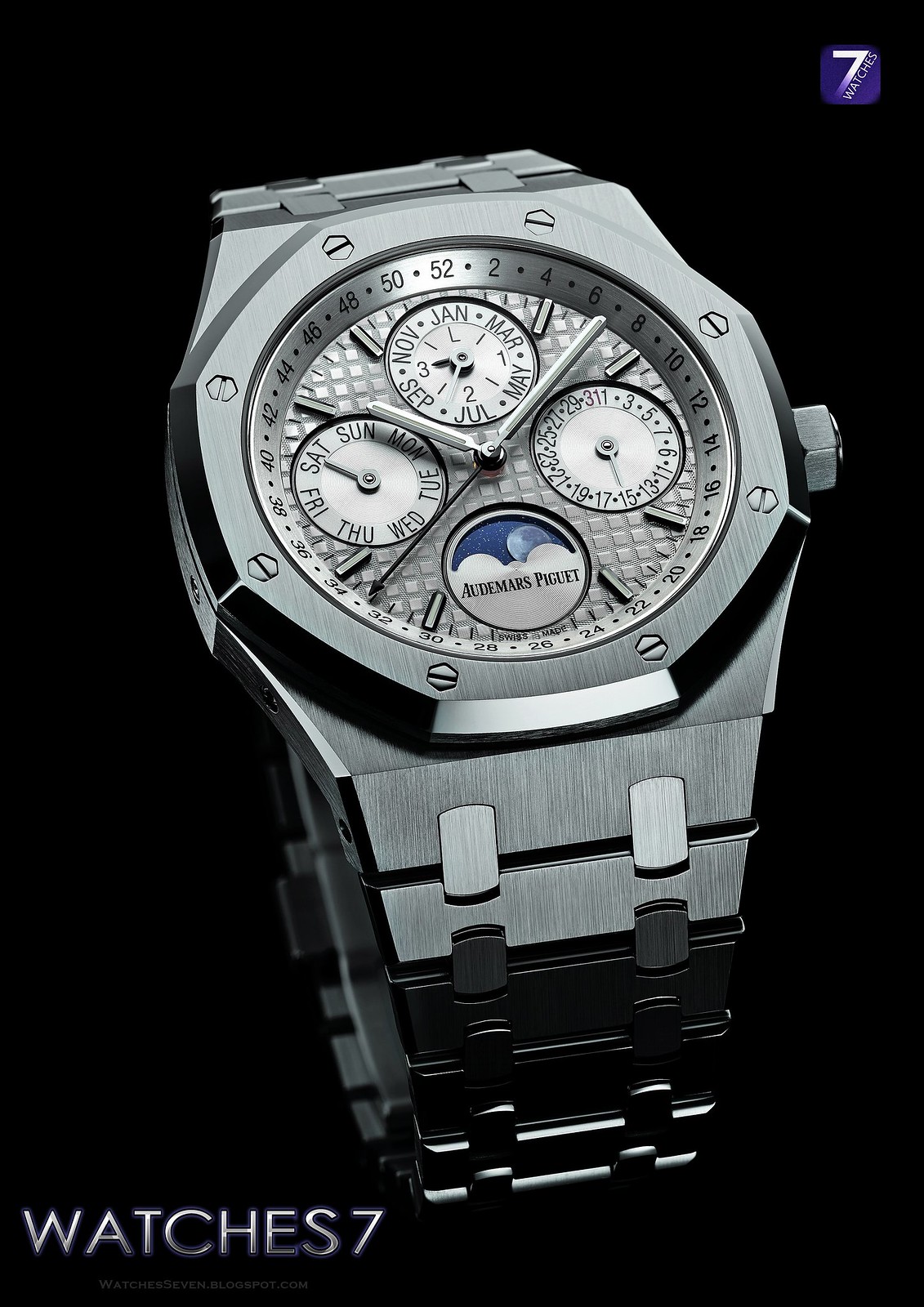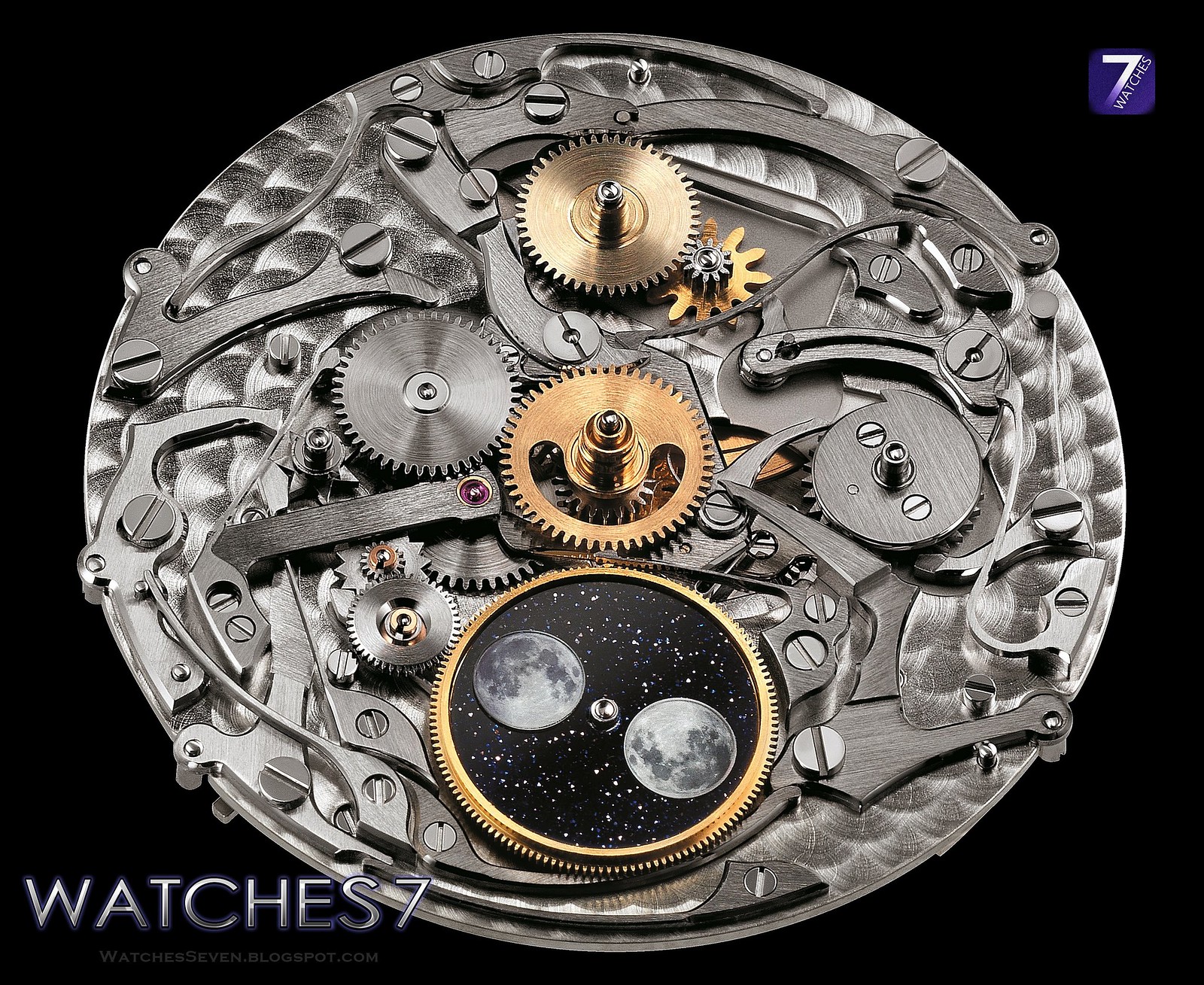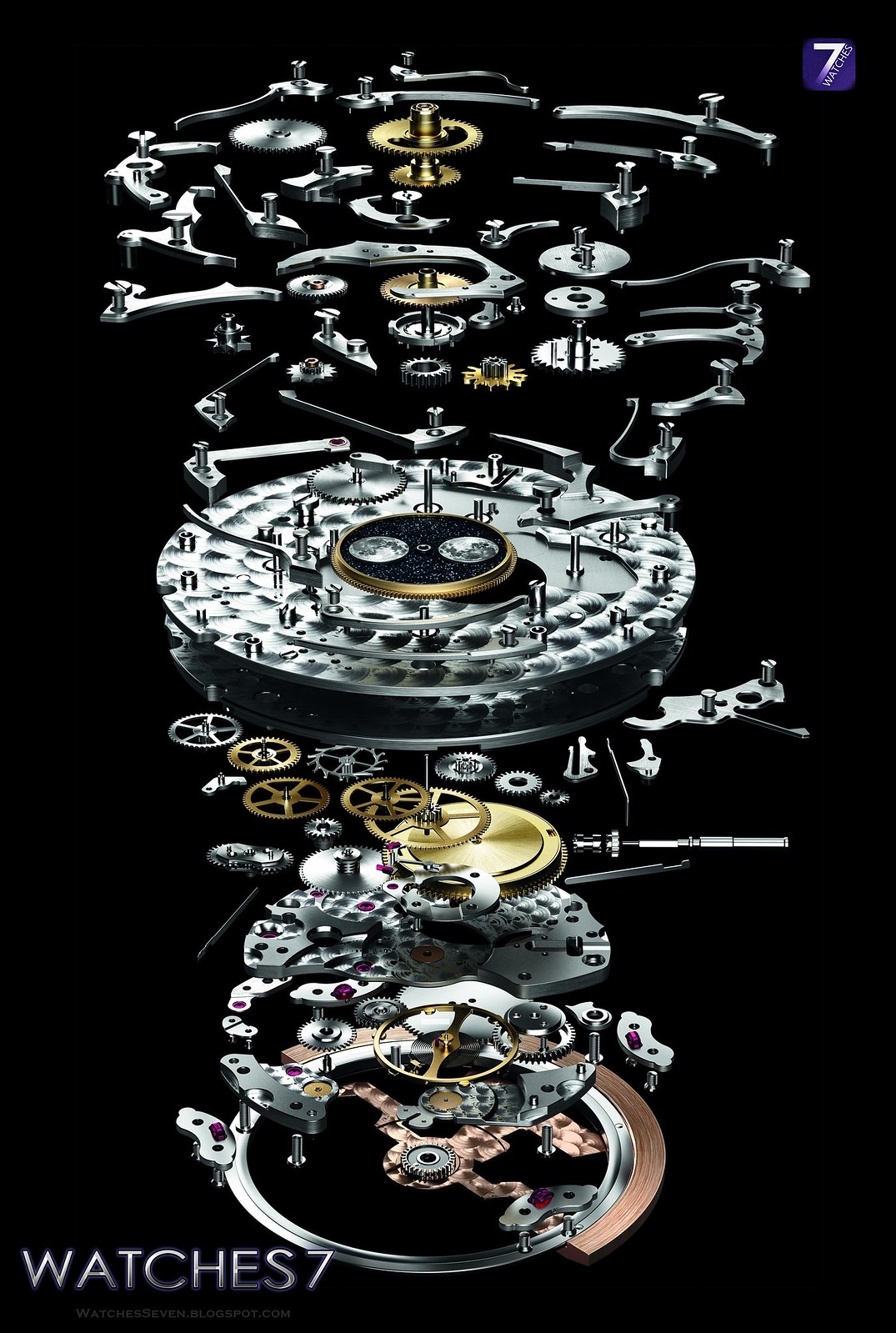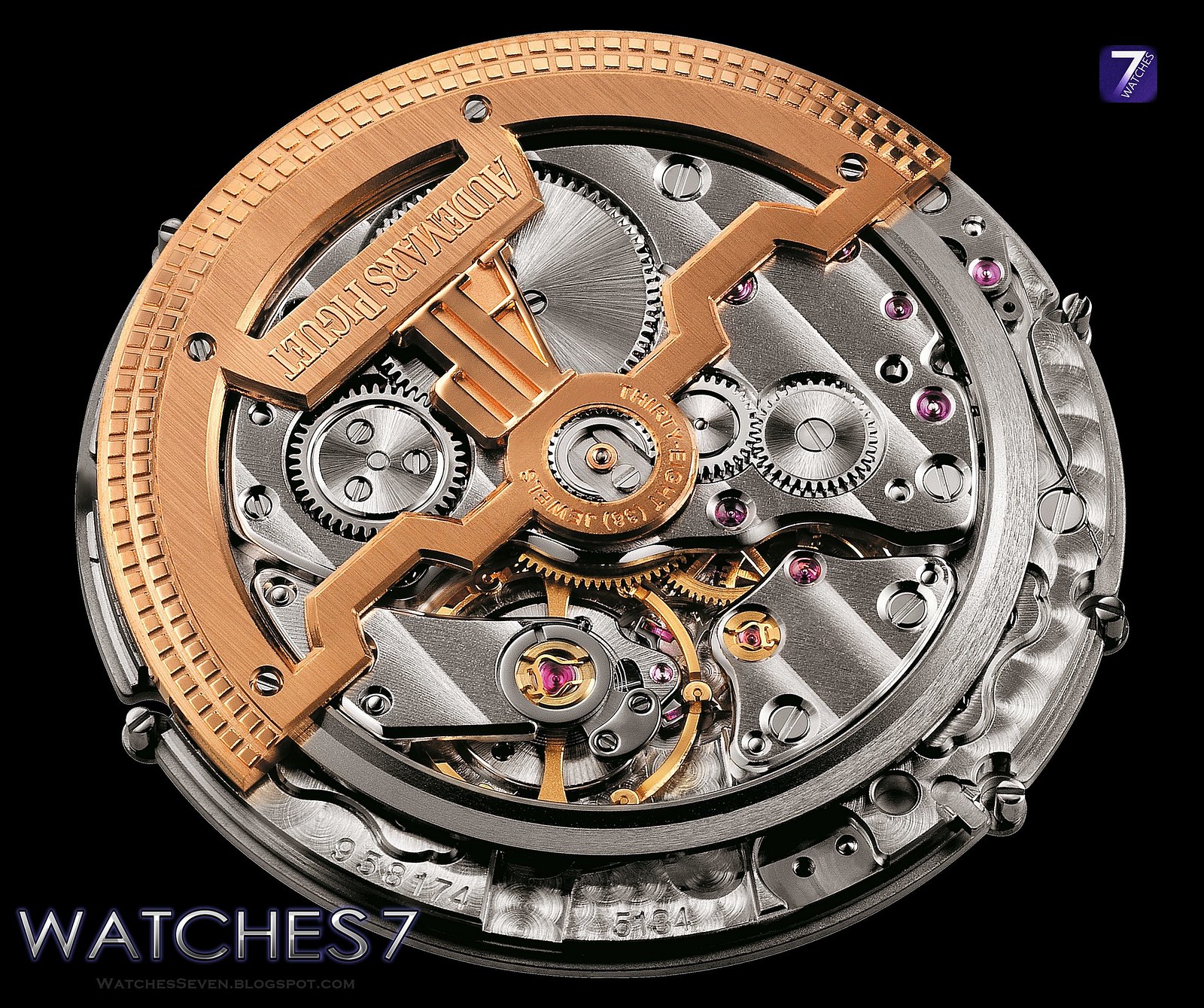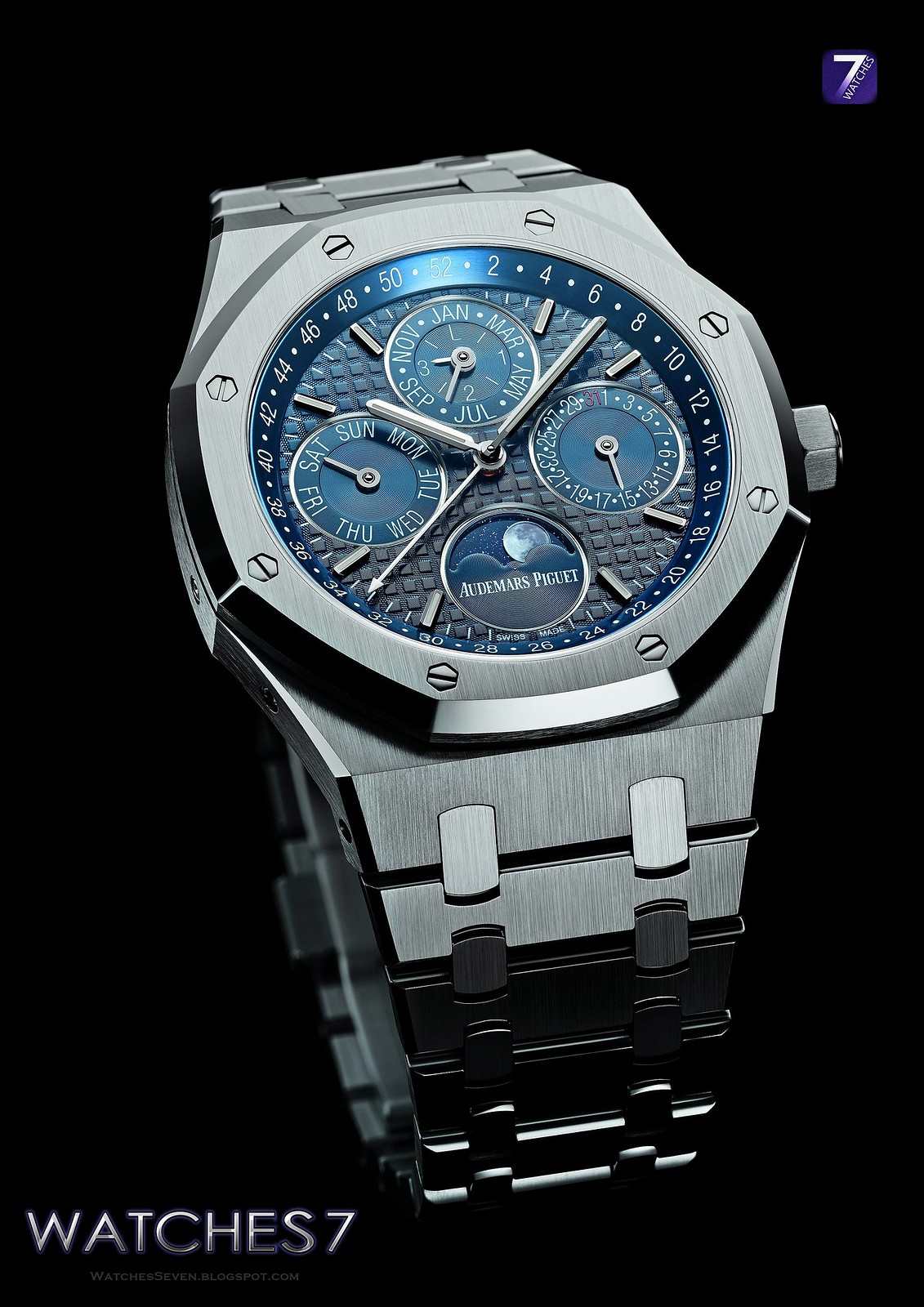AUDEMARS PIGUET – Royal Oak Perpetual Calendar NEW
SUN, MOON, STARS:
THE ORIGINS OF THE
PERPETUAL CALENDAR
CHAPTER I
For the vast majority of time since human beings have existed, the sun has been our daily timekeeper, while the moon, observable stars and constellations have been our calendars. Inevitably, the natural world served as the basis and source of inspiration for the earliest time measurement devices and concepts, and Horology, the science and study of time measurement, has always been directly linked to astronomy in every respect.
Click on the mouse wheel to see the large size ... BIG FOTO
Horological devices and calendars evolved throughout much of the ancient world, including Egypt, Babylon, Greece, Rome and China. Shadow clocks and sundials were the most widely used timekeepers for centuries, and are among the earliest ancestors of modern timepieces with origins going back
3500 years as they captured and measured the passage of time as dictated by the sun.
In addition to sundials, many other astronomical and time measurement devices were developed in antiquity and during the centuries leading up to mechanical clocks and watches.
Click on the mouse wheel to see the large size ... BIG FOTO
For instance, the Astrolabe, which means “Taker of Stars”, was introduced in Ancient Greece approximately
2300 years ago. Its development is attributed to Greek astronomer and mathematician Hipparchus, and the earliest versions were essentially instruments to assist with astronomical observations, much like portable star charts that showed the relative distance in the night sky of known stars. The Astrolabe was greatly improved upon during the Islamic Golden Age from the 8th century until the
13th century, and the addition of scales made it functional for navigation through deserts and eventually oceans.
Finally, water clocks, or “Clepsydra” in Greek which translates to “Water Thief”, have been used as time measurement devices since approximately 1500 BC. An ancestor of mechanical clocks, water clocks were used to measure the passage of time for daily use and astronomical observation, to trigger bells, and eventually to activate more complex chiming mechanisms and automaton figures.
THE DAWN OF ASTRONOMICAL MECHANICAL HOROLOGY
In the Western world, the first mechanical tower clocks began to appear in Europe during the early
13th century. They were more reliable than their water clock predecessors, but they were not accurate, and neither were the earliest watches from the
16th century which were essentially miniaturized clocks. However, since the sun, the phases of the moon and the observable stars were the only timekeepers that mattered for a long time, watches from the mid-
16th century began to feature astronomical complications, including day, date and phases of the moon.
Click on the mouse wheel to see the large size ... BIG FOTO
Meanwhile, the Western calendar was also going through revision and refinement. Back in 46 BC, Julius Caesar introduced the Julian calendar which consisted of
365¼ days, 12 months and incorporated a leap day at the end of February every four years. It was a major reform of the previous Roman calendar, which was believed to be a lunar calendar, however, the Julian calendar turned out to not be perfect either…
WHAT HAPPENED ON OCTOBER 5TH 1582? NOTHING!
The Julian calendar was in fact “late” by 10 days as over the centuries human time began to lag behind that of nature. Pope Gregorio XIII therefore decided to introduce a new Gregorian calendar to correct this, with a direct jump from October 4th 1582 to…October 15th 1582! In this new calendar still in use today, the leap year system was maintained, but one leap year was deleted every one hundred years, apart from the last years of centuries of which the number is divisible by 400. That is why the year 2000 is a leap year, while the years 2100 and 2200 will not be.
It was not until the
17th century that better accuracy and reliability in mechanical horology could be achieved. During this period, discoveries in science and technology became increasingly reliant on accurate time measurement. Among the most critical individuals that helped make the leap from timekeepers being incredible novelties to them becoming vital tools of scientific discovery, was the Dutch astronomer, horologist, physicist, mathematician and thinker, Christiaan Huygens (
1629 –
1695). Huygens invented the pendulum in
1657 which greatly increased the accuracy of clocks, and was among the firsts to develop the balance spring which improved the accuracy of watches. English philosopher, architect and horologist Robert Hooke (
1635 –
1703) is credited with introducing the balance spring just ahead of Huygens. The pendulum and balance spring are still the primary means of mechanical horology to this day.
Click on the mouse wheel to see the large size ... BIG FOTO
SIMPLE CALENDAR VS PERPETUAL CALENDAR
The calendar mechanisms of these early astronomical watches are generally referred to today as simple calendars or triple calendars (day, date and month), and they usually feature moon phase displays. Simple calendar watches do not make the adjustment to the leap year and the date does not automatically adjust to compensate for the varying number of days in each month. Consequently, the date indication on the watch has to be manually corrected five times throughout the year: the 1st day of March, May, July, October and December.
On the other hand, a perpetual calendar watch is a complex micro-mechanical device that has been engineered to automatically adjust to the varying number of days in each month, and even to the leap year. For example, the watch knows that February has 28 days for three consecutive years prior to the leap year when the 29th day is added. It is in many regards an analog computer as it calculates or computes the complexities of the calendar independently from the user, taking automatic account of months with 28, 29, 30 and 31 days, and it will require no correction until the evening of February 28th 2100 (a Gregorian calendar exception to the standard leap year rule).
The development of the perpetual calendar is believed to have occurred circa
1800. There were few watchmakers capable of producing perpetual calendar watches at that time, and the Vallée de Joux, birthplace of
Audemars Piguet, was one region where this expertise eventually flourished.
Click on the mouse wheel to see the large size ... BIG FOTO
VALLÉE DE JOUX AND AUDEMARS PIGUET ORIGINS
THE AUDEMARS PIGUET
PERPETUAL CALENDAR LEGACY
CHAPTER II
Regions of great horological importance and impact evolve in geographic locations that have proximity to the natural resources required to manufacture watch components. Metallurgical activity stretches all the way back to the
15th century in the Vallée de Joux.
Click on the mouse wheel to see the large size ... BIG FOTO
Generations of residents working the mills and forges during the long winter months provided the opportunity to develop and perfect the metallurgical arts, creating the foundation for the exceptional level of watchmaking that would evolve in the region. High quality knife and tool making were among the trades that preceded watchmaking in the Vallée, which began to take shape in the
1740s and
1750s:
- 1753 Isaac Abraham Piguet, the first Piguet in the field of watchmaking, began his apprenticeship.
- 1760 Isaac Abraham achieved the level of master watchmaker.
- 1869 Joseph Piguet was received as a master. Joseph’s direct descendants include Edward Auguste Piguet, one of the founders of Audemars Piguet. Joseph’s original school watch from the 1760s was passed down through the generations and is now displayed in the Audemars Piguet museum.
- 1851 Jules Louis Audemars was born in Le Brassus, Vallée de Joux, and descended from generations of watchmakers. Fine watchmaking was in his blood, it was his life pursuit from a young age. His childhood days working with his father, and his apprenticeship with several master watchmakers in the region helped develop his skill set to the level of “repasseur”, or finisher.
Among the watchmakers that were part of Jules’ family tree, was his great uncle
Louis Benjamin Audemars who produced many iconic watches during the early to mid-19th century, including an incredible pocket-watch that featured dual perpetual calendar displays: both the Julian and the Gregorian calendars were actually represented. Ledgers demonstrate that at least five important Vallée de Joux watchmakers worked in collaboration on this watch.
- 1875 Following Jules Louis’ apprenticeship, the young and talented watchmaker set up his first workshop in Le Brassus. From the onset, he began working and collaborating with Edward Auguste Piguet, two years his junior and also a promising young “repasseur”. Like Jules Louis, watchmaking was in the very DNA of Edward Auguste as he was part of the craftsmen descendants and cognoscenti of the extensive watchmaking traditions and history within the Vallée de Joux.
During the first six years of the partnership,
Audemars Piguet primarily produced complicated movements that were sold to firms in Geneva who would then case the watches and resell the final product. The pair knew this would not be enough, and this led the two gentlemen to officially establish their new firm with the expressed intention to make and market completed watches.
- 1881 Audemars Piguet was officially registered, with Jules Louis primarily responsible for the technical direction of the company and Edward Auguste in charge of the financial and commercial direction of the company. This division of responsibility proved to be immensely effective and was largely maintained as management of the company was passed to the children of the founders.
- 1882 Of the 1500+ watches produced by Audemars Piguet, the company ledgers demonstrate that over 80% of them included at least one complication, and in many instances, numerous complications.
- 1892 The perpetual calendar, the minute repeater and the chronograph were and still are the domain of Audemars Piguet – they are an extension of the founders themselves and part of the Vallée de Joux collective history.
For
Jules Louis and
Edward Auguste, as well as other vital Le Brassus watchmakers, there was a distinct sense of pride and responsibility as inheritors of the great Vallée de Joux watchmaking traditions that preceded them. To this day,
Audemars Piguet has never left the hands of the founding families and has never stopped producing complicated watches – even during the pressures of War, economic depressions and sea changes within the industry that buried countless other firms. This uninterrupted focus and caring attention have been the driving force behind the spirit of innovation and independence, as well as the immense respect for tradition that define the brand.
Click on the mouse wheel to see the large size ... BIG FOTO
THE AUDEMARS PIGUET
PERPETUAL CALENDAR
LEGACY
Audemars Piguet has an uninterrupted history of creating exceptional perpetual calendar watches that goes back to the company’s origins over
140 years ago. While all time measurement devices can be viewed as an extension and expression of astronomy, the perpetual calendar mechanism is the one complication that embodies the ancient relationship between astronomical observation and the evolution of calendars and timepieces. The Vallée de Joux is an ideal geographical location for scenic and celestial observation, and watchmakers past and present have cited the natural views as a source of inspiration.
One of the earliest perpetual calendar watches that is part of the
Audemars Piguet museum was made even before the company was established. Jules Louis Audemars’ school watch was completed in its first incarnation prior to the origins of
Audemars Piguet in
1875, and transformed in the workshops over the following two decades. The complicated 18-carat pink gold pocket-watch masterpiece combines a perpetual calendar with a quarter repeating mechanism, and includes the rarely seen independent deadbeat second function.
Click on the mouse wheel to see the large size ... BIG FOTO
During the
1910s and
1920s,
Audemars Piguet began to produce stylized unique perpetual calendar pocket-watches that were highly differentiated from those being made by other leading Swiss firms. For instance, in
1921 the Manufacture produced a rarely seen cushion-shaped perpetual calendar pocket-watch made in a combination of platinum and 18-carat yellow gold, with a dial featuring black Arabic numerals and a distinct Art Deco aesthetic, which was sold in
1923.
As the
20th century progressed, the very first wristwatches with perpetual calendar emerged. While these were exceptional, they all lacked the defining element of the perpetual calendar pocket-watches that preceded them – the leap year indication.
Click on the mouse wheel to see the large size ... BIG FOTO
In
1955,
Audemars Piguet began production on the very first series of perpetual calendar wristwatches in the world to feature the essential leap year indication. A total of only 9 examples of this celebrated and elusive model were created. They featured meticulously finished 36 mm cases and distinct two tone dials.
By the late
1970s, the Quartz Crisis hit critical mass and buried many traditional watch firms while requiring others to greatly adapt their entire way of manufacturing and marketing timepieces.
Audemars Piguet was one of the only traditional high-end Swiss watchmakers that not only continued to produce mechanical masterpieces throughout the Quartz Era, but also continued to innovate.
One of the greatest horological innovations of the late
1970s was
Audemars Piguet’s
1978 release of the world’s thinnest selfwinding perpetual calendar wristwatch. Conceived in secret and developed by master watchmaker Michel Rochat (referred to as “Le Mic” by friends) with the help of some of his highly skilled colleagues, the groundbreaking perpetual calendar wristwatch achieved its extra-thinness (3.95 mm) by adapting the exceptional
calibre 2120 movement launched in
1967.
Click on the mouse wheel to see the large size ... BIG FOTO
With this, “Le Mic” contributed to transfer the traditional watchmaking savoir-faire to the young generations. This new perpetual calendar calibre was central in attaining stability for
Audemars Piguet during the Quartz Crisis, but also in ushering a new era of growth as it proved to be massively successful. Only a couple of brands were offering perpetual calendar wristwatches at the time and following the success of the new models,
Audemars Piguet proceeded to revive and reinvent many other classic complications in years that followed.
Click on the mouse wheel to see the large size ... BIG FOTO
In 1984, the extra-thin selfwinding perpetual calendar was introduced for the first time in the
Royal Oak collection, and while production of perpetual calendar wristwatches was well underway by then,
Audemars Piguet also continued to create avant-garde and classical pocket-watches with perpetual calendar. During the
1980s,
1990s, and
2000s,
Audemars Piguet introduced a wide variety of perpetual calendar watches with varying design codes, ranging from the
Royal Oak and the
Royal Oak Offshore, to the Jules Audemars and the Tradition.
Click on the mouse wheel to see the large size ... BIG FOTO
CHAPTER III
2015
THE ROYAL OAK PERPETUAL CALENDAR:
THE NEW GEOMETRY OF TIME
Perpetual calendars are part of the DNA of Audemars Piguet, and in 2015 the Royal Oak Perpetual Calendar returns to center stage with an entirely new design, size and calibre. Continuing the shift in watch case size that began in 2012, the new Royal Oak Perpetual Calendar is now 41 mm, yet still extremely thin.
Click on the mouse wheel to see the large size ... BIG FOTO
The enlarged size has resulted in a “Grande Tapisserie” dial design that greatly increases the overall aesthetics, balance and legibility of the perpetual calendar indications. The layout of the dial includes all of the traditional indications of a perpetual calendar watch: day, date, month, leap year and in addition, an highly detailed astronomical moon. On top of this, the 52 weeks of the year are indicated by an outer chapter ring with corresponding central hand, adding another layer of time measurement.
Click on the mouse wheel to see the large size ... BIG FOTO
THE NEW GEOMETRY OF TIME
CALIBRE 5134
The new selfwinding
calibre 5134 is based on its predecessor,
calibre 2120, however it has been enlarged in accordance with the updated 41 mm case size. The highly finished 4.31 mm thick movement is fully visible through the glareproofed sapphire crystal caseback.
Click on the mouse wheel to see the large size ... BIG FOTO
The thinner the movement, the more complex it is to adjust and assemble its parts as it requires extraordinary skills to work on components which are sometimes as thin as a human hair. However all finishing operations are performed by hand in accordance with the highest standards of Haute Horlogerie:
Click on the mouse wheel to see the large size ... BIG FOTO
•THE SUSPENDED BARREL, WHICH HELPS ACHIEVING EXTRA THINNESS, IS ADORNED WITH CIRCULAR CÔTES DE GENÈVE, AND THE WHEELS ARE CIRCULAR SATIN-BRUSHED.
•THE MAINPLATE IS CIRCULAR-GRAINED WHILE ALL BRIDGES ARE BEVELLED AND ADORNED WITH CÔTES DE GENÈVE, THE FLANKS ARE SATIN-BRUSHED AND ALL BEVELS ARE POLISHED.
Click on the mouse wheel to see the large size ... BIG FOTO
•THE 22-CARAT GOLD MONOBLOC OSCILLATING WEIGHT IS ENGRAVED WITH “AUDEMARS PIGUET”, AND ITS EXTERNAL SEGMENT IS ADORNED WITH A “TAPISSERIE” MOTIF ECHOING THE ICONIC PATTERN OF THE ROYAL OAK DIALS.
Click on the mouse wheel to see the large size ... BIG FOTO
A powerful combination of modern aesthetics and prestigious traditional complication, the new
2015 Royal Oak Perpetual Calendar is the latest chapter of this incredible journey which began
140 years ago.
Click on the mouse wheel to see the large size ... BIG FOTO
--------------------------------------------------------
TECHNICAL SPECIFICATIONS
MODEL: ROYAL OAK PERPETUAL CALENDAR WITH WEEK INDICATION AND ASTRONOMICAL MOON 41 mm
YEAR: 2015
REFERENCE:
26574ST.OO.1220ST.01 Silver-toned dial
Click on the mouse wheel to see the large size ... BIG FOTO
------------------
REFERENCE:
26574ST.OO.1220ST.02 Blue dial
Click on the mouse wheel to see the large size ... BIG FOTO
REFERENCE:
26574OR.OO.1220OR.01 Silver-toned dial
Click on the mouse wheel to see the large size ... BIG FOTO
-------------------
REFERENCE:
26574OR.OO.1220OR.02 Blue dial
Click on the mouse wheel to see the large size ... BIG FOTO
MOVEMENT
CALIBRE 5134
Total thickness: 4.31 mm
Total diameter: 29.00 mm
Frequency of balance wheel: 2.75 Hz (19,800 vibrations/ hour)
Number of jewels: 38
Minimal guaranteed power reserve: 40 hours
Bidirectional selfwinding
Balance with variable inertia blocks
Flat balance-spring
Mobile stud-holder
Number of parts:
374.
SPECIFICITIES
Extra-thin movement
Suspended barrel
The oscillating weight is guided by a peripheral ring rolling on four ruby runners, which reduces friction and wear to the minimum possible
Moon phase indicator, laser microstructured, laid on aventurine
Moon phase astronomical indicator requiring correction every
125 years and
317 days
Manual finishing on components
Oscillating weight can be custom decorated upon customer’s request.
CASE
Stainless steel case 41 mm
18-carat pink gold case 41 mm
Glareproofed sapphire crystal and caseback, screw-locked crown.
DIAL:
Silver-toned dial with “
Grande Tapisserie” pattern, white gold applied hour-markers and
Royal Oak hands with luminescent coating, silver-toned inner bezel.
FUNCTIONS:
Perpetual calendar with week indication, day, date,
astronomical moon, month, leap year, hours and minutes.
BRACELET:
Stainless steel bracelet with
AP folding clasp.
18-carat pink gold bracelet with
AP folding clasp.
---------------------------------------------------------------
Audemars Piguet (Marketing) SA
Route de France 16 - Case postale 16
1348 Le Brassus - Switzerland
Phone :
+ 41 21 642 39 00
Fax :
+ 41 21 642 34 02
--------------------------------------------------------------------
www.facebook.com - Audemars Piguet
--------------------------------------------------------------------------------
www.AudemarsPiguet.com


